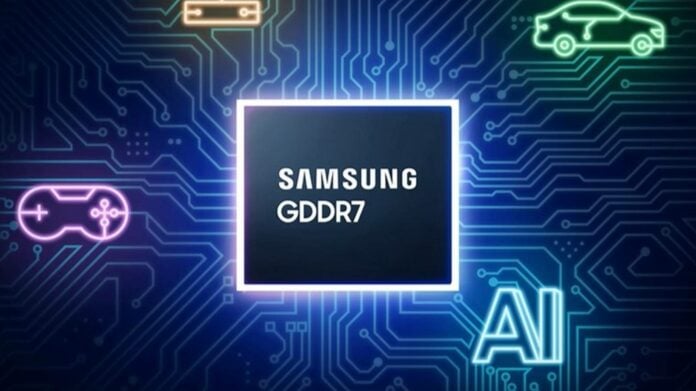Samsung continues pushing the boundaries of graphics memory, announcing new advancements in capacity and efficiency. The brand’s new GDDR7 chip offers 24Gb per chip and takes less energy than its predecessors.
The Korean giant is once more introducing a faster, larger, and more efficient version of its GDDR7 memory, manufactured using its 5th-gen 10nm node. This time, the brand is presenting its 24Gb (3GB) chips, rated for up to 42.5Gbps speed. These mark a 50% density improvement over 2GB GDDR6X chips while offering a 30% boost in efficiency. Such memory would bring a noticeable performance uplift to next-gen GPUs thanks to the increase in available bandwidth.
While AMD and Intel are rumoured to stay on GDDR6 as they target the mid-range, Nvidia is expected to use 28Gbps or 32Gbps GDDR7 VRAM on its RTX 5000 Series. Though not as fast as the one we are talking about, 32Gbps GDDR7 should be perfectly suited for an RTX 5080, for example.
Under favourable conditions, the new GDDR7 chips can be 84% faster than the 23Gbps GDDR6X found inside the RTX 4080 Super. Such speed is possible thanks to PAM3 signalling, which utilises three voltage levels to transmit data. In other words, the same signal can carry more information per pulse compared to PAM2. The next best thing would be HBM memory, which already powers AMD and Nvidia data centre solutions.
The memory giant plans to enter mass production for these chips early next year. This means that we are unlikely to see them on Nvidia, AMD, and Intel’s next-gen GPUs, at least initially. The earliest would be alongside refresh models such as Nvidia’s Super cards.
In any case, GDDR keeps pushing its limit to remain the sensible choice for graphics vendors. How long this will be the case before HBM takes over remains unknown. But at the end of the day, as long as graphics performance continues improving, either technology is welcome.


